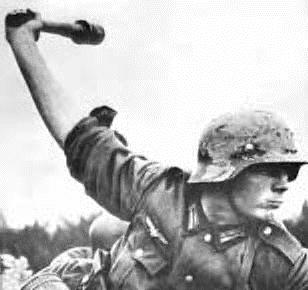
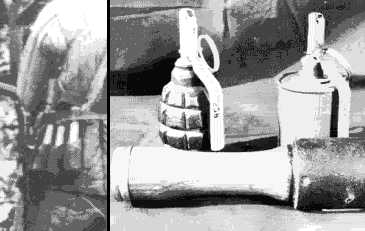
www.military.com/features/0,15240,155689,00.html
Rafael's New Door-Breaching Rifle Grenade
Aviation Week's DTI | Joris Janssen Lok | November 06, 2007
This article first appeared at Aviation Week's Ares Weblog.
For the U.S. Army, kicking down doors will become blowing them down now that the service has ordered $52 million worth of Simon door-breaching rifle grenades from Rafael Advanced Defense Systems Ltd of Israel.
In a statement issued today, Rafael says that the Simon, or GREM (grenade, rifle, entry munition) as it is known in the U.S., is a lightweight, rifle-launched grenade specially adapted to breaching steel or wooden doors from a stand-off distance. It may be fired from a variety of rifles using regular bullets.
Says Rafael: "The Simon (GREM) is designed to breach a door or to enable breaking an entry into a building or an enclosed area, while posing minimum collateral damage or risk to the gunner and to troops following him. The warhead has a special dome shape and its explosion generates a shock wave which blasts the door and causes it to yield."
The Simon (GREM) is a member of Rafael's family of shoulder-launched breaching munitions, together with the Matador family that has been developed and produced in conjunction with DND of Germany.
There is a Matador WB (PZF-90 / Mauler WB) for breaching a variety of walls enabling a mobility corridor for troops in the urban warfare environment, a Matador MP, multi-purpose breaching for destroying bunkers and light armored vehicles and a Matador AS (PZF-90 / Mauler AS) for striking enemy forces located within structures.
Both the Simon (GREM) and the Matador family can be fired from inside enclosures, Rafael says.
www.janes.com/extracts/extract/jiw/jiw_9028.html
Development
The Simon door-breaching rifle grenade, or Rifle-Launched Entry Munition (RLEM), is a joint development between Rafael and Manor Propulsion and Explosive Systems Division, of Haifa. It is intended for the remote rapid removal of locked and/or barricaded doors during Military Operations in Urban Terrain (MOUT) and other similar military activities, including anti-terrorist operations. In the USA, the Simon is known as the M100 Grenade, Rifle Entry Munition (GREM). During early 2000, Rafael, in association with Primex Technologies (now General Dynamics Ordnance and Tactical Systems, was awarded a US$2.15 million contract to deliver an initial 1,817 M100 grenades to the U.S. Army. The base contract included 720 XM101 reusable training rounds (with and without bullet traps), together with 10,000 impulse rounds; 15 inert models for training; and support. The contract includes three option years for further purchases at specified prices.
Description
The standard Simon grenade is the Simon 150. It consists of a 150g shaped explosive charge in a plastic housing, a long, light alloy stand-off rod, a stabiliser tail, a safe/arm mechanism and an impact detonator. The grenade can be configured for a variety of standard assault rifles, including the M16A2/A4 and the M4 carbine.The grenade is launched from the muzzle of the carrier rifle from a distance of up to about 40m; minimum stand-off range is 10m. Launch propulsion is provided by a standard ballistite blank cartridge, although an integral bullet trap allows the M100 to be launched using standard M855 Ball and M856 Tracer rounds. When the stand-off rod strikes the target, the impact detonator explodes the main charge. This directs a sharp blast wave forward to blast down the door and clear any associated booby traps. Backblast is minimal, so that once the door has been removed from its hinges and/or surround, the interior can be stormed immediately.While the Simon 150 can be used to blast down doors, the lighter Simon 50 can be used to blow in windows. The Simon 300 can be used against hardened structures.
World War II: Victory at Oberhoffen, France, 11 February 1945
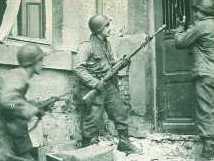
Second Lieutenant (then Sergeant) Eric C. Dahlgren, U.S. Army, Company E, 142nd Infantry, 36th Infantry Division.
Congressional Medal of Honor Citation:
He led the 3rd Platoon to the rescue of a similar unit which had been surrounded in an enemy counter-attack at Oberhoffen, France. As he advanced along a street, he observed several Germans crossing a field about 100 yards away. Running into a barn, he took up a position in a window and swept the hostile troops with submachine-gun fire, killing 6, wounding others, and completely disorganizing the group. His platoon then moved forward through intermittent sniper fire and made contact with the besieged Americans. When the 2 platoons had been reorganized, Sgt. Dahlgren continued to advance along the street until he drew fire from an enemy-held house. In the face of machine-pistol and rifle fire, he ran toward the building, hurled a grenade through the door, and blasted his way inside with his gun. This aggressive attack so rattled the Germans that all 8 men who held the strongpoint immediately surrendered. As Sgt. Dahlgren started toward the next house, hostile machinegun fire drove him to cover. He secured rifle grenades, stepped to an exposed position, and calmly launched his missiles from a difficult angle until he had destroyed the machinegun and killed its 2 operators. He moved to the rear of the house and suddenly came under the fire of a machinegun emplaced in a barn. Throwing a grenade into the structure, he rushed the position, firing his weapon as he ran; within, he overwhelmed 5 Germans. After reorganizing his unit, he advanced to clear hostile riflemen from the building where he had destroyed the machinegun. He entered the house by a window and trapped the Germans in the cellar, where he tossed grenades into their midst, wounding several and forcing 10 more to surrender. While reconnoitering another street with a comrade, he heard German voices in a house. An attack with rifle grenades drove the hostile troops to the cellar. Sgt. Dahlgren entered the building, kicked open the cellar door, and, firing several bursts down the stairway, called for the trapped enemy to surrender. Sixteen Soldiers filed out with their hands in the air. The bold leadership and magnificent courage displayed by Sgt. Dahlgren in his heroic attacks were in a large measure responsible for repulsing an enemy counterattack and saving an American platoon from great danger.
Vietnam good: M14 rifle grenades
Sergeant Major, U.S. marines, by Maurice J. Jacques.

"More impressive was watching those marine infantrymen scramble out of the UH-34 helicopters and moved towards the tree line in front of them. Before they could reach the trees, their own mortar sections had covered the area with smoke rounds to obscure their movement. I mentioned to Sergeant Haferkamp that I had never witnessed 60mm mortars fire so fast or so accurately. The vision remained with me as an idea to be used later".
Later on, he discovers how the fire was delivered so quickly in a conversation with Staff Sergeant Pete Connors In the mess hall. Sgt. Connors was in the company he had been watching and it was his idea to use rifle grenades in a helicopter assault. I'll pickup his later statement as to how his company employed them.
"I told him I had watched their progress that day and was impressed with how rapidly they had been able to put their 60mm WP rounds into the tree line. Staff Sergeant Connors laughed and said that what I had witnessed was not 60mm mortar fire, but rifle grenade used in a unique manner. Connors told me he assigned one M14 grenade launcher to each squad. Since new men had a problem telling where enemy fire was coming from, he gave the rifle grenade launcher to his most experienced men. The M14 required the spindle valve be turned to the OFF position to fire the rifle grenade. Connors said he required his Grenadier to have one WP grenade attached to the rifle and a crimped cartridge in the rifle's chamber. The Grenadier also had a full magazine of 7.62mm rounds locked in his rifle's magazine well. As soon as he fired the WP grenade, the Rifleman/Grenadier immediately turned the spindle valve to the ON position, pulled back on the operating rod, and loaded a live round into the chamber. He followed the burst of his WP grenade with a stream of nineteen rounds of accurate rifle fire. Knowing where the enemy was located, the rest of the rifle squad could key in on the bursting white phosphorous grenade and deliver more accurate fire."
"SSgt Pete Connors, Fox Company, 2/7, was killed in action trying to save one of his men who lay wounded in a rice paddy."
Maybe his method can be used to save other men's lives. That would probably make him smile.
Vietnam bad: a near disaster from enemy rifle grenades
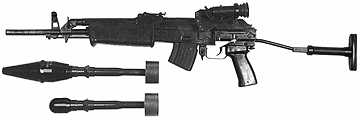
L/cpl Joe C. Paul, Company H, 2rd Battalion, 4th marines (Rein), 3rd marine division (Rein)
Congressional Medal of Honor Citation:
Near Chu Lai, Republic of Vietnam, 18 August 1965. In violent battle, L/Cpl. Paul's platoon sustained 5 casualties as it was temporarily pinned down, by devastating mortar, recoilless rifle, automatic weapons, and rifle fire delivered by insurgent communist (Vietcong) forces in well entrenched positions. The wounded men were unable to move from their perilously exposed positions forward of(the remainder of their platoon, and were suddenly subjected to a barrage of white phosphorous rifle grenades. L/Cpl. Paul, fully aware that his tactics would almost certainly result in serious injury or death to himself, chose to disregard his safety and boldly dashed across the fire-swept rice paddies, placed himself between his wounded comrades and the enemy, and delivered effective suppressive fire with his automatic weapon in order to divert the attack long enough to allow the casualties to be evacuated. Although critically wounded during the course of the battle, he resolutely remained in his exposed position and continued to fire his rifle until he collapsed and was evacuated. By his fortitude and gallant spirit of self-sacrifice in the face of almost certain death, he saved the lives of several of his fellow Marines.
Panama: Disaster at Punta Paitilla Airport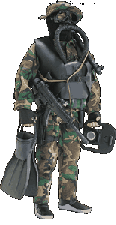
Two platoons from U.S. Navy SEAL Team 4 are pinned down by enemy automatic weapons fire attempting to get in close to set explosive charges against Panamanian strongman, Manuel Noriega's Learjet to prevent his escape from Panama. As bullets skip across the runway into SEALs who were trying to block the runway with a light airplane, casualties mount from automatic weapons fire. Someone has to silence the enemy guards firing behind the cover of dirt filled barrels.
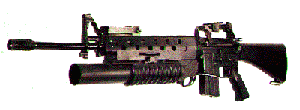
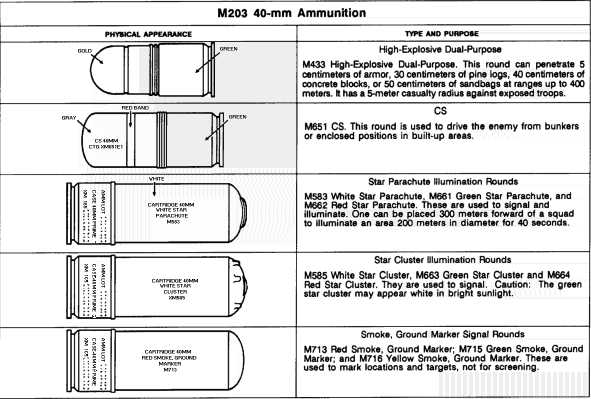
U.S. 40mm M203/M79 40mm grenade cartridges
World 40mm cartridges for M203/M79 Grenade launchers
A SEAL with a 40mm M203 grenade launcher attached to his M16 Assault rifle rushes forward to get into firing position. He is cut down and later dies.
4 SEALs dead, 8 seriously wounded before fire superiority is gained and the enemy killed.
A high price to pay for an attack that could have been done at a safe stand-off using the maximum effective ranges of the weapons in their hands as suggested vigorously by LTCDR Mike Walsh before the mission but over-ruled. For more details on Seal Team 4's raid on this airport click here
THE PROBLEM WITH BULLETS
The basic flaw in fighting on the automatic weapons-swept battlefield is you fight the enemy at best even when you do not have SUPERIOR explosive effects. A 5.56mm bullet doesn't explode, so you must maneuver to get a straight shot at an enemy protected behind the terrain or urban cover. In fact, after Korea, we lost the rifle grenade with the demise of the M14 in Vietnam and have been suffering ever since. The enemy has always had rifle grenades; after WWII added Rocket Propelled Grenades (RPGs) that can be carried loaded in their reusable-launchers which have distinct firing grips at-the-ready and fired as soon as you stop to aim.
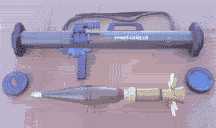
Our disposable rockets require their sights to be opened before firing---they don't have pistol grips so they can be ran into firing position like the RPG or the new CHICOM PF-89 disposable anti-tank rocket. We need to add firing grips to our disposable rockets to gain this capability and field the re-usable M3 RAAWS 84mm launcher which already has it to ALL infantry units not just Rangers.
After the RPGs the enemy fielded the AKM series of selective-fire weapons around the world immediately after Korea, resulting in free world forces being pinned down by a weapon with 30 shots to their 8-20, in some cases them firing only one shot for every trigger pull while the enemy could fire a continuous burst on fully automatic. In WWII, the good guys could shoot faster, now the bad guys had the advantage until the M16 arrived to save the day. Unfortunately, instead of improving the rifle grenade, the U.S. threw out rifle grenades with the M14 and adopted the single-shot M79 shotgun-style 40mm grenade launcher in Vietnam which made the rifle squad lose a rifle's worth of firepower in order to lob a tiny grenade whose meager 5 meter kill radius explosive effects were absorbed by the dense jungle and not the enemy. The Grenadier himself couldn't defend himself from close-range automatic weapons fire attack. After the war, the 40mm grenade launcher, M203 was attached underneath a M16 rifle but still shoots the miniscule 40mm grenade from a select few people in the squad, who are likely to get pinned down and be unable to support their comrades by explosive effects fire as seen time and time again in places like Punta Paitilla.
For a good simulation of the impotence of the M16/M203's 40mm grenade, download this simulation of a dismounted force attack on a drug lab:
Delta force attack in the jungle
Explosive effects need to be a capability of EVERY Soldier in the rifle squad.
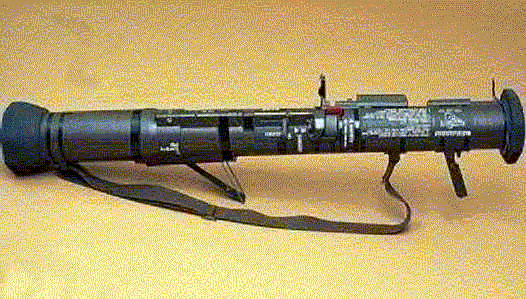
U.S. disposable rockets like the M136 "AT-4" (84mm) above DO NOT have firing grips to run into firing position ready to launch, requiring the Soldier to pause and open up sights during a critical part of the battle
The SEAL team firefight was ended when a M136 AT4 rocket was fired at Noriega's Learjet, disabling it.
To help change this, the U.S. Army's small arms team is seeking a combination 5.56mm and 20mm grenade launcher with air burst capability called OICW or "Objective Individual Combat Weapon" to replace the current M16/M4 carbine and M203 GL family of weapons. While its a good idea to give every Soldier a grenade launcher, it is added weight for him to carry and cost. We hope the "smart" 20mm GL is adopted as an add-on to the M16/M4 5.56mm family of weapons instead. What we really need NOW is the rifle grenade.
THE PROBLEM WITH GRENADE LAUNCHERS
The world is urbanizing, just bullets will not do. Regardless, there is a limit to the amount of explosives a 20mm shell can hold, even a "smart" one. The M203's 40mm grenade is too weak for MOUT other than precision-fire into a window.
But it gets worse, much worse.
The M203's barrel blocks the bayonet lug, thus if the enemy gets close to you, you cannot rifle-bayonet fight with him as time and time again, recent battles have proven necessary.
The M203 GL is an ignored weapon. There is no MILES simulation for it, so it doesn't get used on force-on-force maneuvers other than to signal/mark targets--which is a good use I myself use all the time. But its HE effects are not factored into training, and you FIGHT as you TRAIN.
You cannot just go and shoot a M203, you need a range and expensive one-time use ammunition. It simply doesn't happen.
Next, thanks to personnel turmoil, Grenadiers are never assigned for long, and the Grenadier vests never leave the supply room or never get ordered. Thus, someone with no experience firing the weapon is given it just before a Field Training eXercise (FTX) or worse combat, and has no way to carry 40mm shells other than a loose clump in the BDU trouser pockets, where they inevitably fall out. I resorted to taping the cardboard packing sleeves together to hold the 40mm shells in groups of three in my BDU pocket during recent JRTC-prep maneuvers. The new MOLLE and RACK vest panels for the 40mm GL will likely suffer a similar fate except in elite units where every shred of combat advantage is strived for.
We need something bigger and we need EVERY SOLDIER to have it--so if someone is in position to hit the enemy they can, preventing designated Grenadiers from having to get up and expose themselves into a firing position. That something is the bullet-trap or thru rifle grenade.
THE SOLUTION: Modern Rifle/Hand grenades
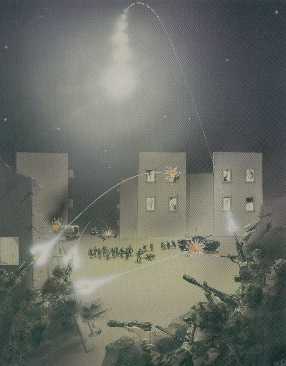
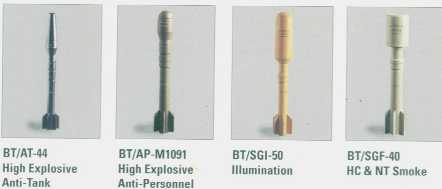
The Israeli Defense Force (IDF) are big believers in rifle grenades. An IDF Paratrooper writes:
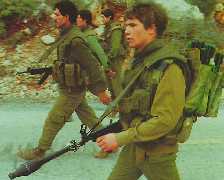
Photo courtesy of the AWESOME IDF Special Forces web site: www.isayeret.com
"Haven't used the bullet-trap type. We always used a Mecar type, fired by a blank. We keep the blanks in a special magazine in a pouch...I've used both, the 203 and the Mecar type. Used the Mecar type very effectively in Lebanon... One of my guys stopped a moving car full of Tangos with a Mecar...Our Paras always carry rifle grenades, plus the 203...Good thing about the rifle grenades is their light, you can carry a whole quiver...We tend to favor them over the 203... It's a quiver pouch on your back, like a quiver of arrows...[See photo above] We carry the RPG warheads the same way...Well, not everyone gets them. You give them to the trained Grenadiers...The neat thing is you can train on practice ones over and over again... not like M203 which gets ignored (doesn't have a re-usable practice round)...and shooting rifle grenades is FUN"
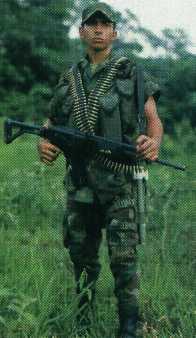
And this Russian Soldier taking a break from combat in Chechnya:
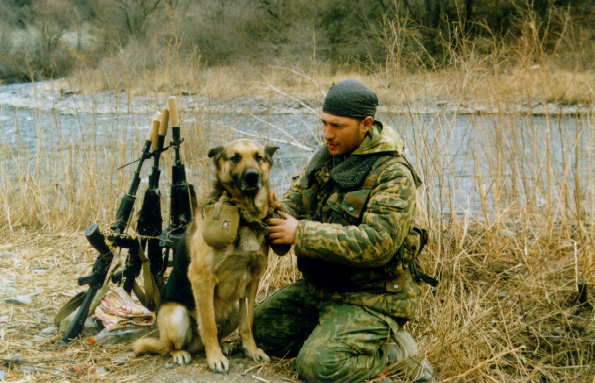
In contrast, U.S. forces DO NOT have rifle grenades and must rely on the M224 60mm mortar at company level without fire direction for area suppression; an exercise in futility on the battlefield. Too heavy to be carried swiftly to various parts of the battlefield like the "knee mortar", its 60mm projectile is too wimpy to control the terrain with explosive effect from a static position without a Fire Direction Center (FDC) and is ineffective against buildings in MOUT. In Vietnam, the enemy ran circles around our units humping the 60mm mortar, pummeling them when they stopped to rest. If they had rifle grenades they could have stopped this immediately.
http://www.earlyamericanhomes.com/Vietnam/articles/1997/04972_text.htm
A noted weapons analyst describes how this could be dealt with:
"The 60mm mortar is an order of magnitude larger than the 40-50mm mortars (actually "grenade launchers") I was writing about.
No, I would not recommend the 60mm mortar for a hunter-killer team. Wrong size. Weapons at each echelon should be matched.
Squad weapons (rifles, SAWs, and rifle grenades) reach out several hundred meters, essentially in direct-fire. Shooters are often pinned and can barely get a fleeting glance at the targets.
Platoon weapons (Light/Medium Machine Guns, recoilless rifles, etc) need greater range (about 500-1,000 meters) to overwatch all of the squads. By being farther back, they cover the platoon front and also draw less suppressive fire. They are still rapidly emplaced and frequently shifted, so are also direct fire, only.
Company weapons (tripod-mounted .50 cal Heavy Machine Guns, mortars, heavy recoilless rifles) have still greater range (well over 1,000 meters, and 3,000 meters becoming the norm once TOW fielded) to overwatch all of the platoons. They are far enough back to where they can set up a stable firing position, hence this is where indirect firing mortars first appear. They also require large crews to handle the ammunition, observing and fire control, etc., so they do not belong in the front lines.
Placing heavier weapons farther forward generally doesn't work. They are too readily suppressed, the crews are too exposed, and the commander loses control. In WW I, we tried pushing [towed] French 75s along with the assault elements to take out machinegun nests. Germans tried same sort of thing at times. Both sides just got the guns stuck in mud and lost the crews to the very same machineguns they sought to kill.
The 60mm mortar is too cumbersome for platoons, and too light for companies. Its bursting charge is too small to be effective, and its range is mediocre. Peacetime 'Light fighters' prefer it to the 81mm because they can carry it easily, but combat experience (WW II, Korea, Vietnam) always resulted in replacement by the heavier mortar for a few years, until peacetime preferences took over, again.
Regards the article on Vietnam, you see the problem throughout. Mortar crew too small to carry enough ammo, so everyone else has to carry rounds. Crew constantly being suppressed. Ammo quickly expended. Accuracy and effectiveness doubtful. Compare to what could have been instead with a company 81mm platoon and battalion 4.2" mortar platoons in direct support, reacting to calls for fire from the lead platoons. A lot easier and more effective, assuming that you have guys trained as FOs. But hey, that war is long over and I do not need to refight it. Just remember that there are plenty of lessons from it, and most are, 'don't do what we did.'
To do 'hunter-killer' today, squads would suppress and leader should simply call-for-fire.
Digression: During early 1980s, concurrent with GEN Wickam's 10,000 man Light Infantry Division (LID), we went off to replace the company 81mm and battalion 4.2" mortar with the 'new and improved' 60mm and 81mm, respectively. They claimed that new projectiles were so much more lethal that we could 'do more with less.' Well, to make a long story short, Light Fighters still have the 60mm, the heavy fighters scrapped the 81mm altogether and went up to 120mm mortars at battalion. What does that tell you?
It was after I learned more on rifle grenades that I came to appreciate the value of the 40-50mm mortars that were common at the outbreak of WW II (Germans, Poles, Russians, Japanese, others). Their role was an extension of WW I anti-machinegun 'hunter-killer' teams. The French merged a Chauchat automatic rifle team with VB rifle Grenadiers into a squad for taking out German Maxim 08/15 light (okay, 60 lbs, but still portable) machineguns. The Chauchat would suppress while VBs were fired and adjusted until the target was killed. In such a role, a 40-50mm mortar is much more stable and accurate than a grenade launcher. Of course, trench warfare did not set in in WW II, so the small mortars disappeared over time. Still, they were far more useful in a defense than most people realize."
Unlike the older generation rifle grenades that needed to be fired by special blanks, the latest generation of rifle launched munitions can be launched SAFELY by standard live ammunition. This is a grenade that is placed over the end of the service rifle and launched by trapping the bullet completely or as it passes through. This can propel very large charges of explosives up to 150-350+ meters with a 20+ meter kill radius. Every Soldier can have BT rifle grenades. The VJ Serbian Army is fond of their family of rifle grenades and has taken to shooting them at peacekeepers and innocent civilians. The rifle grenade can be practiced on in training using blanks and practice rifle grenades to achieve a high level of accuracy at a very low-cost, that means EVERY Soldier can be proficient with their use...
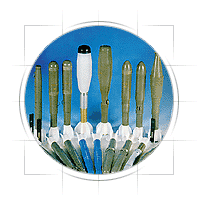
One problem is the weight and size of the BT Rifle grenades.
What we suggest is that the BT Rifle grenade body telescope to a compact size like FN's do. When ready to use, you extend the fins, put on the end of your rifle, then fire. But taking this the next step, we suggest that the BT Rifle grenade be given the option of being a HAND GRENADE like the German "potato masher" seen at the top of this page. By pulling a pin, the grenade can be thrown with fins extended or compact like a can. Then each Soldier could have a large supply of grenades that can be rifle launched or hand thrown as the situation requires, as SGT Dahlgren did in WWII France. The Serbs wear special Load Bearing Vests (LBVs) that contain several rifle grenades in accessible poches at their back, like a quiver for arrows. We would do well to learn from our enemies on this one, using the modular approach to adding rifle/hand grenade pouches to our current TLBV/ETLBVs and MOLLE/RACK LBVs.
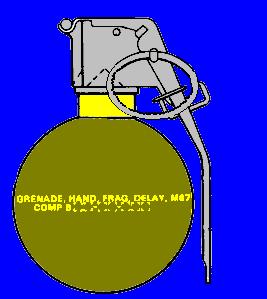
Thus, instead of carrying BT Rifle grenades AND hand grenades, Soldiers and Paratroopers carry just the BT Rifle/hand grenades, increasing their firepower and flexibility to execute Airborne Warfare.
In fact such grenades already exist in the British Army.
In the Gulf War Soldiers of the British 4th and 7th Armoured Brigade used French 40mm Luchaire rifle grenades. These have a "bullet trap" so they can be fired using conventional ball ammunition. Bullet-through, or bullet trap, grenades - like the Belgian FN and MECAR designs, French Alsetex, and Israeli IMI BT/AP and BT/AT range - allow a Soldier to load a rifle grenade without fiddling about with blank rounds during a fire fight, and hit targets up to 300 meters away. U.S. Alliant Technosystems (see pictures on this page) have riot control and instant flechette rifle grenades to get the shotgun effect many like when shooting the M79 in closed terrain/vegetation in Vietnam (See Feedback #4 at the bottom).
The original rifle grenades were anti-personnel (AP), but with developments in shaped charge technology they are also available now in anti-tank (AT) versions.
Grenade Hand-Rifle, Anti-Personnel L2A2
Weight: 395 g
Length Overall: 81mm
Max Diameter: 60mm
Weight of explosive: 170 g
Type of explosive: 55/45 RDx/TNT.Delay Time: 4.4 + 0.5s
Lethal Radius: 10m
Number of Fragments: Approx 1,000
The L2A2 can be either fired from a rifle but it is usually hand thrown. For training there are the Grenade Hand, Practice, Inert L3A1, L3A2 and L3A3. Also available is the Drill Grenade, Hand L4A1 and the L4A2, both are fitted with the Drill Fuse, Grenade, Percussion L30.
The marines almost get rifle grenades in the 1980s but wimp out (so much for their warrior spirit)
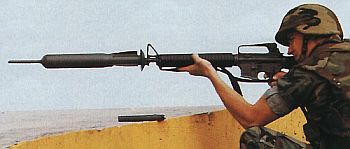
RAAM (Rifle Launched Anti-Armour Munition) was developed at the end of the 1980s for the needs of the USMC.
For use, first an adapter must be installed onto the assault rifle. The grenade can be fired with completely normal ammunition, whereby in case of ball, the projectile remains and the grenade brings it away to a safe distance. Afterwards, the rocket engine at a safe distance ignites, thus RAAM can also be fired from closed areas. The HEAT warhead is ignited by a proximity fuze and becomes armed only after 10 meters of flight.
Manufacturers: Olin
Kind: Rifle anti-tank rocket grenade
Weight: 1.65 kg
Length: 56.4 cm long
Range Effective: 250m
Caliber: 400mm
U.S. Forces out-gunned on the modern battlefield, why?
We have shown how we are getting our "rears" handed to us in the close fight by enemy rifle grenades, RPGs, AKMs etc. However some may say the smaller M203 GL round can be carried in larger numbers and fired over a longer period of time before running out than non-collapsing fin rifle grenades.
The problem is the M203 is ineffective versus an enemy with rifle grenades (Vietnam), and in the hands of a dedicated Grenadier is often pinned down and unable to fire (Punta Paitilla). If you factor EQUALLY all of the general infantry tasks in a sort of mini-Battlefield Operating System (BOS) kind of way, the result is the needed corrective action gets stymied by Lowest Common Denominator (LCD) thinking. The LCD here is that the M203 has smaller shells so you can carry more of them compared to non-collapsing fin rifle grenades and continuously fire them over time, if you elevate this aspect to an equal footing to the explosive effectiveness factor, you negate the entire need to go with rifle grenades.
Result: status quo remains intact! And we will continue to lose the close fight, and men, and battles and wars....
However, it doesn't work:
1. If the dedicated M203 Grenadier is pinned down by enemy fire.
2. The Grenadier is poorly trained due to manning turmoil etc. and cannot shoot accurately--vital for its puny warhead size---due to the weapon not taken seriously and having no consistent training means
3. The shells being fired over time, even if they are landing near the enemy are irrelevant due to their small size/effect.
4. The weight of the M203 GL itself--inefficient way to deliver grenades at extended ranges
What matters is HITTING AND KILLING the enemy and the M203 40mm GL isn't doing it.
On the other hand, rifle grenades are 3 times as lethal, and if packaged right can be carried by EVERYONE IN THE SQUAD. What this means is instead of 6 pounds of M203 Grenade launcher weighing down the M16, you can have 6 x RIFLE GRENADES right there. You are already "6 rifle grenades up" on the M203 from the "get-go". For the same weight as a M203, your Grenadiers can have 26 x rifle grenades compared to just 20 x 40mm grenades and a 6-pound M203 dead weight attached to the M16.
Then, if you make the rifle grenade fins/tube collapse, they can be carried in less space and thrown as baseball or "stick" hand grenades---now you are giving the Soldier a vastly improved fighting potential----he has 30 rifle or hand grenades---depending on the situation he has 30 explosives effect charges for 0-40 meters or 100-350 meters, whereas the M16/M203 GL Grenadier has 20 x 100-300 meter explosive effects and 4 x 0-40m explosive effects available. The Rifle/Hand Grenades are the same size as an illumination M203 40mm Grenade now.
INDIVIDUALLY:
30 is better than 20.
30 is better than just 4.
GROUP:
Then you multiply this by the potential of the rest of the squad.
Paratrooper 2000 Rifle/Hand Grenade-equipped Infantry Squad
1 Squad Leader = 10 R/H grenades
2 Grenadiers = 60 R/H grenades
2 Fireteam leaders = 20 R/H grenades
2 Rifleman = 20 R/H grenades
2 Auto Riflemen = 20 R/H grenades
130 Total Grenades from 0-350 meters
1999 "Status quo sucks" M203 GL and Hand Grenade-equipped Squad
1 Squad Leader = 4 x H grenades
2 Grenadiers = 40 x 40mm, 8 x H grenades
2 Fireteam leaders = 8 x H grenades
2 Rifleman = 8 x H grenades
2 Auto Riflemen = 8 x H grenades
40 x M203 GL Grenades from 50-350 meters
36 x Hand grenades 0-40 meters
A mere 76 total grenades. If the two Grenadiers are pinned down, there is no extended range fire available.
In the U.S. Army the Fireteam leader has a M203 GL and there is 2 Riflemen in the squad, probably in realization the M203 is best used for leader target marking than explosives effect killing. Yet another reason why we need rifle grenades so we are not out-gunned on the modern battlefield.
With the loss of the M8 Buford Armored Gun System, retirement of M728 Combat Engineer Vehicles, Iowa Class battleships, our infantry is set for a repeat of October 3, 1993 Somalia all over again. We MUST do something TODAY to give our troops shock action to prevail on the increasingly urban battlefield. BT Rifle/hand grenades are something we can do to solve this.
Lets do it before its too late.
GOOD NEWS! BULLET TRAP RIFLE GRAPPLING HOOKS IN U.S. ARMY SERVICE IN BALKANS NOW!...and soon as breaching aids for urban combat!
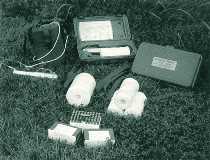
The crisis in the former Yugoslavia and the millions of mines still buried there has forced the adoption of a bullet or blank launched grappling hook from the M16 service rifle to breech mines/booby trapped-areas..
In a training situation like at JRTC, your designated grappling hook launcher Soldier rapidly removes his Blank Firing Adapter (BFA) and fires the grapnel either 100 meters, or 80 meters or 20 meters depending on which type blank cartridge used. The system can be used in a hand toss mode and could easily fit inside a breech kit with other implements or simply fit inside a BDU trouser pocket.
In a combat situation, ball rounds (not tracer or armor piercing types) could be used for a long 100 meter range placement.
This hopefully will mean that experience/success with rifle launched grapnels for breaching will result in new interest in rifle launched GRENADES for destroying/combat.
Better Urban Combat Simulation using "paint-ball" technologies
The old adage, "You fight as you train" is a warning to the wise that we have to be as realistic as possible or else pay for it when the bullets are for real. We are unfortunately not doing this due to the limitations on the amount of destructiveness we can apply to training structures and our people. The key weakness has been that we cannot use live ammunition, but this has been recently solved by using less powerful ammunition with non-lethal plastic bullets filled with paintball type colors like SIMUNITION. The realism now matches the firepower effects of real bullets and our tactics, techniques and procedures (TTP) can develop in more realistic ways at least for the close ranges in an urban setting where SIMUNITIONs are effective (under 100 meters).
One area where we are still weak is in team entry into a room through a predictable door using predictable "stacking" techniques. This may be ok for police SWAT situations but it's a disaster waiting to happen in urban combat where its live or die not freedom or arrest. The solution has always been in a combat situation to enter a building or a room at a point of our choosing where booby-traps and enemy fires are not likely to be in place using a breach hole. Breach holes can be made by the explosive effects of a tank main gun, autocannon fired in a continuous stream, demolitions charges or today with an infantryman firing a breaching charge from a safe stand-off.
The U.S. Army is proceeding with the Rifle Launched Entry Munition (RLEM), which is a bullet-trap rifle grenade that upon contact after launch creates a breach hole in building walls. We need to be able to simulate it in training or else our TTP will not reflect the reality of its existence and capabilities and we will continue to execute the increasingly risky predictable door-entry TTP.
FM 7-8 Infantry Rifle Squad and Platoon, Change 1
www.adtdl.army.mil/cgi-bin/atdl.dll/fm/7-8/ch6.htm
LREM

How to simulate the RLEM?
I propose we take the currently type-classified U.S. Army Launched Grappling Hook (LGH) and remove or cover its snag wires with a soft plastic cap holding paintball pellets. Upon launch using a full-power blank, the RLEM simulator flies towards the wall and upon impact splatters paint ball pellets marking where the breach hole is. The team then gets to proceed through the nearest door to that spot via referee (Observer/Controller: O/C) and "enter" the building from that unexpected point on. Obviously if holes are cut-out of MOUT buildings and covered with plywood the plywood could be removed to simulate a breach hole being built.
What we need is get the LGH maker (SAA Intnl), the RLEM maker (Rafael, Israeli company) and Tippman (Paintballs) to join together to make the re-usable RLEM simulator for the U.S. Army to mass produce it and make it available for all Army units to better train as we need to fight.
Other Paint-Ball technologies available
There are many paint-ball grenades, grenade launchers, claymore mines, mortar launchers in use to better ceate the indirect fire and grenade effects that MILES-type laser "tag" systems cannot relicate. The U.S. Army should as soon as possible develop paintball launching adaptors to interface with its existing M120 120mm mortars and M203 40mm grenade launchers to increase training realism to compliment the urban combat advances made possible by SIMUNITIONs. It may be a pyrotechnic or a compressed air propelling system. The paintball grenades and claymore mines are good-to-go as-is and just need to be widely purchased for Army MOUT training.
When Soldiers realize the realism that paintball type technology offers to Army urban and close combat training, being a Soldier will become "fun" again while the deadly need for high levels of proficiency will not be lost on them. Getting hit by a SIMUNITION round hurts and serves as a reminder of what a real bullet could do and is a catlyst to quicken the training efforts of everyone.
Paintball Experts (Claymores, mortars, Grenade launcher paint balls)
http://www.tippmannexplosives.com/
howitzer.htm
mortars.htm
mines.htm
grenades.htm
grenade_launchers.htm
Tippmann Ordnance Co.
1000 S. Lincoln, Unit T
Loveland, CO 80537
Toll Free 1-888-315-5270
RLEM Details
www.aerotechnews.com/starc/1999/080399/Israel_Munitions_USArmy.html
www.rafael.co.il/press1098.html
LGH details
www2.saa-intl.com/saa-intl/Lgh.htm
www.geocities.com/equipmentshop/breechkit.htm (scroll down)
"SILVER BULLET" SOLUTION? ADAPTOR TO MAKE HAND GRENADES RIFLE GRENADES?
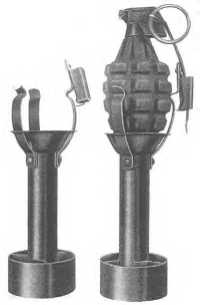
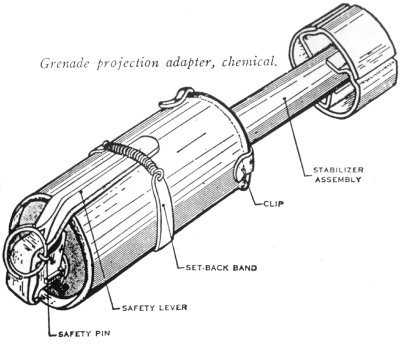
During the Korean war, we had a Mk2A2 adaptor for baseball shaped grenades and an adaptor for soda-can shaped grenades which could make HAND grenades into rifle grenades.
Bert Kortegaard, Korean war combat veteran and webmaster writes:
"The spoon flew off in the air, just the way it did when thrown.
Check my page at:
http://rt66.com/~korteng/SmallArms/mk2rifle.htm
You can see how the spoon fits in the restrainer. You mount the grenade to the converter, which keeps the spoon down. When you may definitely want to launch ... about the same ready status as Lock and Load, you FIRST make sure you have a grenade cartridge in the rifle, SECOND mount the launcer/adapter, THIRD pull the pin (you had to hold the launcher with one hand while pulling the pin, because of the sometimes excessive pull-force required, so as not to screw anything up. At that point, the launcher-grenade is about as safe as the ordinary safetied grenade.
1st, the arming-clip that you insert the safety spoon into is kept on the adapter by the bent metal tab. When you fire it, inertia is enough for the arming clip to straighten out the bent piece and this lets the adapter/grenade accelerate out of the clip, and frees the spoon, arming the grenade.
2nd, the grenade stays attached to the adapter throughout the flight path, to the bitter end".
If we are so cheap that we can't create a family of rifle/hand stick grenades, why not then update the grenade adaptor idea using a bullet trap? A bullet trap can be launched by EITHER live rounds OR powerful blanks...
Such an adaptor could propel the current M67 fragmentation hand grenade to a much safer distance than what the arm can throw. The M67 is far more powerful and effective with its 15m kill radius than the puny M203 40mm grenade's 5m radius.
The adaptor would enable the entire family of U.S. hand grenades to become RIFLE grenades---consider:
MK3A2 concussion offensive hand grenade
ABC-M7A2/3 CS Hand
Grenade
AN-M8 HC White Smoke grenade
AN-M14 TH3 incendiary hand grenade
M15 White Phosphorous grenade
M18 Colored Smoke grenade
ABC-M25A2 riot control hand grenade
M61 FRAGMENTATION HAND
GRENADE
M67 FRAGMENTATION HAND GRENADE
M69 practice hand grenade
XM84 Stun Grenade
KEEP THE M203 GL and------get Rifle/Hand Grenades
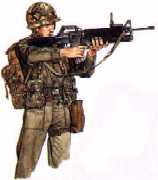
Having said all of this, we are not advocating the elimination of the M203 for its precision-fire capabilities, its ability to fire the multi-buckshot round like a shotgun (good luck getting that round) and a more subtle reason--its a permanent weapon not a round of ammunition like rifle/hand grenades. Sadly, but there is the possibility that as a round of ammunition it will get ignored like the M202, AT4 and M72 LAWs do. At least with the M203 GL its sort of like a "finger in the eye", reminding you that you have to order some ammunition for it and hopefully train/employ it. So let's keep all the investments we have made and "plus up" the rest of the squad with rifle hand/grenades.
REVELATION! IDF HAS "SMART" RIFLE GRENADES
www.defense-update.com/products/r/refaim.htm
REFAIM Advanced Infantry Weapon System
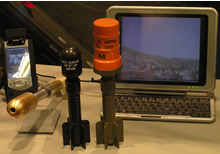
Israel Military Industries (Israel)
The Refaim system was designed for the advanced version of the Tavor but is compatible with any rifle, enhancing the accuracy, lethality agility and flexibility of the weapon. The system offers line of sight and beyond line of sight activity, around the corner viewing and shooting capability and embedded training and mission rehearsal functions.
Refaim uses an air-burst telescopic bullet trap rifle grenade with point detonation, time delay and self destruct functions. The fragmentation charge is optimized against infantry targets but can also penetrate vehicles and windows by utilizing a short time delay, thereby maximizing the effect behind or within cover. The system can also use an add-on grenade launcher such, such as the M-203. The airburst grenade uses a programmable time delay fuse which is set by the Multi-Purpose Rifle System (MPRS) fire control system designed by International Technologies Lasers (ITL).
The MPRS measures the range to the target, displays a corrected aiming point for proper elevation necessary for accurate firing, and automatically sets the time delay fuse in the grenade to activate the bomb just before impact, at a preset altitude over the target. The fuze can also be set to explode at a preset delay after an impact, to penetrate a soft target (a window, for example).
IMI is also developing two new submunitions for the Refaim. The MPRS has additional C4I functions, including a digital compass and laser pointer which provide effective battlefield coordination, as well as full integration into tactical command and control systems. Information from the system can be displayed at the team and squad level, neighboring forces such as tanks or helicopters, or link up to higher command echelons.
At LIC 2004 IMI unveiled an inert Refaim grenade with an embedded camera and communications link, which can send a view of the target as it descends to strike. This low cost system provides a "bird's view" of the target. The image is collected by the receiving unit and displayed to the user as a static image of the target, with various zoom options. The second new Refaim grenade is equipped with CS irritating gas, and is designed to provide security force effective non lethal means, fired at a range of a few hundred meters, over five times the distance currently used by CS grenades and canisters.
AIRBORNE!
FEEDBACK!
#1 A noted U.S. Army tactician/historian writes in:
"Did you know that we had rifle grenades in WW I? It was the French VB (initials of the inventors). The rifle had a can-shaped attachment added to the end of the barrel and the grenade was inserted into the can. The grenade had a hole through the center of it, with a small firing pin inside the side of the hole and attached to the fuze. To launch the grenade, you fired a standard rifle bullet. As the bullet passed through the center hole of the grenade, it struck the firing pin and started the time fuze (2-4 seconds). The muzzle blast following the bullet acted against the base of the grenade and launched it about 200 meters.
Problem, however. French used 8mm bullets. We used 7.62mm (.30-06). The smaller bullet had a tendency to deform and deflect as it passed through the grenade, causing erratic problems. We recognized the problem and were fixing it when the war ended. Also, the can attachment blocked the rifle's sights, so accurate rifle fire was impractical until it was removed.
Do you know why the WW II 12-man Infantry squad retained one M1903 bolt action rifle along with the ten M1 Garands and one BAR? No, it was not a "sniper" weapon. For that there was an M1903A4(with scope). The M1903 was needed as a squad rifle grenade launcher (not the VB, but the conventional rifle grenade with blank cartridge as we know it today). The M1 Garand did not have its grenade launcher developed until later in the war, at which point the M1903 was no longer needed."
#2 A weapons analyst writes:
"Good story, but do not draw too many conclusions from it. As described in this very interesting and innovative example, the rifle grenades are being used to mark targets. They are not being employed in lieu of mortars (or any other indirect fire support). As the storyteller himself explains, his initial observation was mistaken and the facts were presented later.
One obvious "minor tweak" would be a manual spindle valve (like a wingnut) on the M14. I don't know if you are familiar with the M14, but the spindle valve is essentially a slotted screw head and you need a screw driver (the multipurpose wrench of the rifle cleaning kit) to turn it. A manual lever would simplify the switch between bullet firing and grenade launch.
The jury is still out on the relative merit between M203 compared to rifle grenade. Each has pros and cons. The 40mm grenades are smaller and lighter, seem to be more accurate, and have a low firing signature. Low felt recoil is good for Soldier all around. Instant availability of M16 bullets is a plus. On the other hand, rifle grenades could carry larger warhead and could have greater range, but the heavier recoil might tear up the weapon over time, and the individual grenades are rather bulky and heavy. There are performance trade offs between using blank cartridges and "bullet trap" grenades. Compared to something like a LAW or AT4, the rifle grenade has a shorter direct fire range, but much lower signature. The grenade is also much smaller and lighter.
As I see it, the real issue is sustained dedicated fire support versus individual Soldier capability. If you want Grenadiers to support the riflemen with sustained, accurate fire as they close with the enemy, then the M203 is probably the better solution. If you want to give lots of troops an individual capability to deal with special situations (e.g., close-in antitank), then the various rifle grenades are better.
[If you want longer range antitank capability, then recoilless rifles and rocket launchers are needed. If you want sustained indirect fire support,(HE or smoke), then mortars are needed.]
So, once again, all of the above are useful so long as they are employed within their tactical and technical capabilities. It's not a question of, 'which is better?' The question is, "what do you wish to accomplish?"
#3 Military historian/tactician writes:
"I agree with the Feedback #2's comments, for the most part. I would never want to see the grenade launcher removed from the squad. It is very accurate in the hands of a trained grenadier. I know a man who can hit tank size targets on the front slope ten out of ten at one hundred meters (yes I'm bragging, but it's also true). However, the problem lies with his final question. 'What do you wish to accomplish?'. If you don't have rifle grenades in your inventory, that are accessible to the troops, then your ability to use them is a mute point. You are forced to do without them even if you do need them. I know you are tired of hearing this but, to have it and not need it is better than to need it and not have it. As of now we don't have it.
I have seen a demonstration at Graf, put on by SF, in which they had two 60mm mortars firing WP and HE at tank targets. It was quite a show. They probably fired thirty rounds in two minutes and they were mixing in HE rounds. After watching that I figured it would be better to be shelled with HE than WP. If they were firing smoke from a 203 it wouldn't be the same. The 203 smoke rounds that we had were not very good at obscuring anything and would certainly not worry anyone to much. On the other hand a WP rifle grenade would certainly cause you to ponder your next course of action more carefully if you were on the receiving end.
One thing he is dead on about is the ruggedness of the M16 versus the AK family of weapons. It's something to think about. I doubt the M16 could stand up to a lot of rifle grenade firing. [Editor: heavier barrel M16A2s, M4 carbines, not a problem]
If you notice the people who use rifle grenades the most use the AK or a variant like the Galil. I have never liked the Galil because of it's weight, but it's probably no coincidence that the two armies that use rifle grenades exclusively are the the IDF (Galil, a variant of the AK) and the SADF (R-4 variant of the Galil a variant of the AK). Both of these armies have rejected the 40mm grenade launcher for there Infantry although the Israelis do use the 203 for special troops and riot duty. They both have a lot of experience with Infantry combat and should not be ignored.
If we look at this from a tactical point of view Feedback #2's arguments get a little shaky. When I think of the rifle grenade, I see two very important uses. Making contact and breaking contact. He misses the point of the marking targets. Those marines were not just marking targets they were obscuring their own movements at the same time and creating some fear in the hearts of the NVA. The 203 would not scare anyone and would more than likely not obscure all that well.
In the book, Sgt. Major the author points out that he trained all his men how to use rifle grenades and they saved their asses many times by allowing them to break contact. The advantage of rifle grenades are all at the squad level. Calling in mortars when you make contact takes time. At the squad level, being under fire is not a leisurely CP exercise in deciding which weapons system to employ. It's better to do something quick than weight around for mortar rounds or Arty to start falling. Calling in fire is the job of the Plt. Leader or Plt. Sgt. I know we spend a lot of time teaching Calls for Fire, but a squad leader usually is involved in the fire fight and shouldn't be bothered with anything other than trying to gain fire superiority. Rifle Grenades would help you do this at the squad level. Missiles like the AT-4 and LAW are good direct fire weapons but they are bulky and heavy and are impossible to drop in dead ground and although we should have a bunker busting round they both fire HEAT. The rifle grenade can do direct fire, cover dead ground, fire obscuration and Anti tank. That's versatility at very little cost and eliminates a squad leader trying to employ weapons systems that are not organic to the squad and therefore not under his direct control.
My last point is cost. We could take the money from one day of lobbying for the F-22 Rupture and by enough rifle grenades to supply the Army for years of Infantry Combat. That's not the kind of thing the Army traditionally does but it is smart and there's nothing wrong with that."
#4 A U.S. military weapons expert writes:
"Thanks for your note. You put a lot of work into those webpages. Congratulations. I'll be using them.
Couple of thoughts:
1. In Vietnam, I was in the Delta. I usually carried an M-79 with a shotgun round in the open chamber. It wasn't a rifle, but for the dense brush, it was nice. The Swedish K was another nice brush gun. When you broke into the open, the M79 was remarkably accurate. I could never get as good with the M203. The VC had the RPG-2 and the AK--which were a tough combination to beat. The 40mm was no match for the RPG.
2. The problem with the M1 and M14 rifle grenades was that the firer needed a special round to fire it. When bullets are flying close by, it was too easy to screw up. Another common problem with the cage-type stick grenades was that folks would forget to arm the grenade before firing. The rifle-trap grenade solved both these problems but probably came on the scene after we had bought into the 40mm concept.
3. A real whizz-bang weapon for the urban fight (or any close fight) is the Russian RPO flame thrower. It can reach out a kilometer away with a flame round, smoke round or a thermobaric (fuel-air) round. We are still horsing around with the four-shot projecter [M202] that nevers gets out of the arms room and no one knows how to use. And we still have some back-pack flame throwers somewhere in the inventory. Smoke and flame are big in the urban fight and fuel-air makes a tremendous bunker buster. I feel that flame warfare is an area that we aren't really thinking too hard about--probably due to the bad press that napalm received.
4. Some of the recent Soviet/Russian handgrenades are impressive. They have done some great stuff with fragmentation patterns and capabilities".
#5 A Korean war combat veteran writes:
"Times change, and so does weapon effectiveness. In general, we preferred regular Mark Deuce and Mark 14 hand grenades, with heavier duty stuff from the 60mm mortars. Since most action in Korea was at night, we didn't tip our positions or make mistakes like forgetting something critical (like putting in the grenade cartridge - these things happen when a flowing-water of guys are coming at you in the dark), or having to change the adapter (from the M1). Remember, T-34 armor was invulnerable to the anti-tank rifle shaped charge grenades. Usually, we'd just shower grenades down, 30 yards or more, if they attacked us, and got to within 10 yards or so if we were going after them.
Night patrols, when 'stuff hit the fan' all grenade action was at close quarters. The rifle grenade was useful for 50-100 yard tries at crew served weapons in movement situations, or so I heard.
I wrote a short story (on-line) where I use the carbine mounted illum grenade:
http://rt66.com/~korteng/souvenir.htm
but in a real situation we would have more men, and would have called in illum from our 60s (by scr-300 or wire)"
#6 Korean war combat veteran, Bert Kortegaard writes:
"Feel free to copy any photos or information on my KW site, for use in your work. Please do refer to the URLs themselves, and feel free to use my name where you like. I do understand what you are saying, and you are certainly doing important work at correcting an all-too-familiar trend.
For better information than I can provide, you might consider contacting Lt. Joe Owen (WIA, med ret) who was the 1st MarDiv B-1-7 60mm platoon leader at Seoul and in Chosin. He wrote a book "Colder Than Hell", which was published by the Naval Institute Press, Annapolis, and they should be able to put you in contact with him. He would have very clear ideas and examples on all comparison aspects of modern rifle grenade technology as needed in infantry combat. Also, he should be able to put you in contact with other officers who would have first hand knowledge on your questions.
Good Luck, Bert"
http://rt66.com/~korteng/SmallArms/
#7 a noted weapons futurist writes:
"I was looking over Mike's riflehandgrenade page again, hit a link and found I had a new game on my machine (so I had to try it out..)
Interesting -no save mode and you can't take much damage -first few times I got royally creamed! Here's what I've learnt:- You get shot alot less if you crawl and crouch (goooo figure!!!) Best tactic is to take to the high ground and take the bad guys from the flank or behind (that's either really obvious or profound!) Tracers help.
Use the scope to scan the land, and take out foes at a distance if you can. Even with the M203 it would be useful to have a grenade you can just toss around a corner (Pop-top 40mms?)
The following may just be game quirks Distance -a building just a few inches across may only be 72m away. Figures that are just specks are only 200m, so well withing killing range. Even under 100m you need lots of holdover for the M203. 40mm grenades are not area weapons -unless you are putting them in a confined space you need to be jolly accurate.
The M203 in the game loads automatically, so you can keep it on target and walk your shots. This is probably not as easy with a real M203, but it would be possible with the 6-12shot revolver grenade launchers I've been talking about, or Larry's double barreled M79
...be warned, my machine is playing up -don't think it is the game, but be careful."
OUR REPLY: Delta Force is such a good simulation, the U.S. Army Dismounted Battle Lab uses it as a base for its "Virtual Soldier" system at Fort Benning, Georgia where a Soldier is rigged to sensors and interacts with the game holding an actual weapon etc. #8 An aviation expert writes in:
"Dear Sirs: I had just read an article in www.geocities.com/equipmentshop/riflehandgrenades.htm Stating that a M136 AT4 rocket was fired at Noriega's Learjet. DO you relize that this Learjet was not Noriega's aircraft. He never owned a Learjet. This jet was leased to the Panama Government and Noriega did fly in this aircraft but had no ownership. Distroying this aircraft was a very costly mistake by our government. Let's explain the whole truth. The real reason that I am writing to is if you would supply me with the photos of the aircraft after it was distroyed. I did see this aircraft as it was containered back to Fort Lauderdale, but the aircraft was already dismantled. I now teach maintenance on Learjets. Please help if you can. Thank you for your assistance."
Our reply:
Sir,
all you had to do was go to www.google.com and type in the words, "noriega", "learjet" and "hole", VOILA! your picture you requested!
Thanks for sharing the info on our boo boo!
Airborne!
Mike Sparks
Click here: Patilla Field, Panama ??-??-1989
www.specwarnet.com/miscinfo/patilla.htm
REFERENCES
WWII German Rifle Grenades
U.S. Army Hand grenades in Korean war
U.S. Army Rifle Grenades in Korea
CHICOM and North Korean grenades
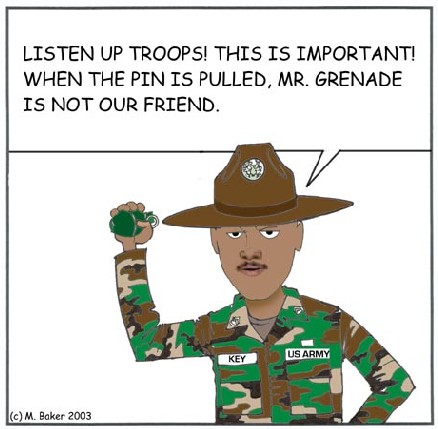
 Return to U.S. Army Airborne Equipment Shop inside frame
Return to U.S. Army Airborne Equipment Shop inside frame